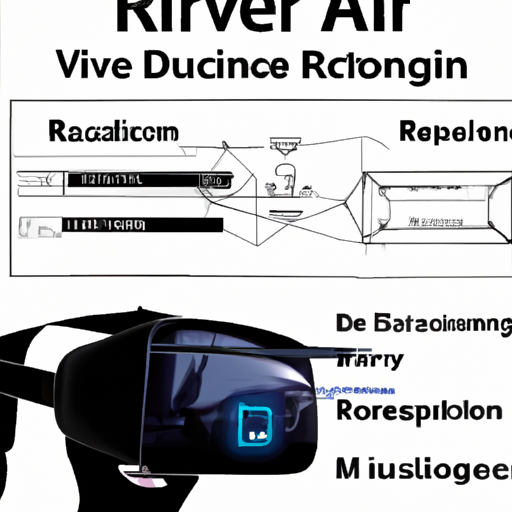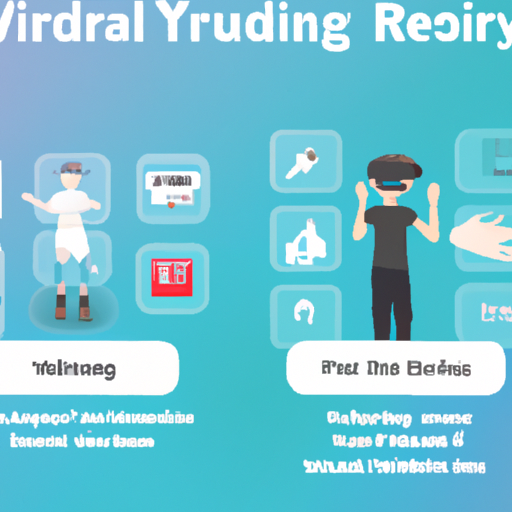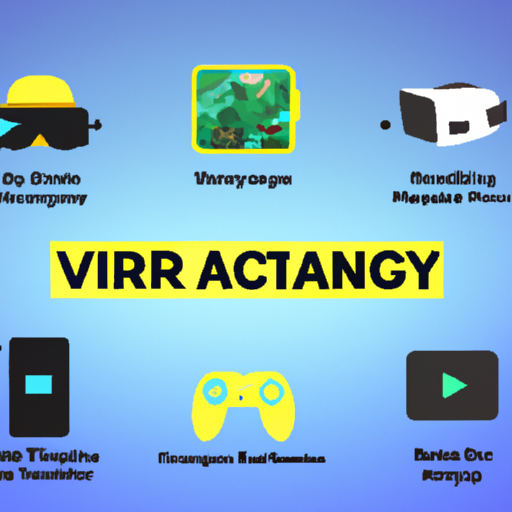-
Table of Contents
“Experience the Future of Design with VR/AR UX”
Introduction
Virtual Reality (VR) and Augmented Reality (AR) are rapidly emerging technologies that are transforming the way we interact with the world around us. As these technologies become more commonplace, the need for effective design and user experience (UX) becomes increasingly important. VR and AR design and UX focuses on creating immersive and engaging experiences that are tailored to the user’s needs and preferences. This includes designing user interfaces, creating interactive elements, and optimizing the overall experience. By understanding the user’s needs and preferences, designers can create experiences that are both enjoyable and effective. With the right design and UX, VR and AR can be used to create powerful and engaging experiences that can revolutionize the way we interact with the world.
Understanding the Impact of Interactivity on VR/AR UX
The impact of interactivity on virtual reality (VR) and augmented reality (AR) user experience (UX) is significant. Interactivity is a key factor in creating an immersive and engaging experience for users. It allows users to interact with the virtual environment in a meaningful way, providing a sense of presence and control.
Interactivity can be achieved through a variety of methods, such as gesture recognition, voice commands, and haptic feedback. Gesture recognition allows users to interact with the virtual environment by using their hands or body movements. Voice commands allow users to control the environment with their voice. Haptic feedback provides tactile feedback to the user, allowing them to feel the virtual environment.
Interactivity also plays an important role in creating a sense of immersion. Immersion is the feeling of being completely immersed in the virtual environment. It is achieved through a combination of visual, auditory, and tactile feedback. By providing users with a variety of interactive elements, such as gesture recognition, voice commands, and haptic feedback, developers can create a more immersive experience.
Interactivity also plays an important role in creating a sense of presence. Presence is the feeling of being in the virtual environment. It is achieved through a combination of visual, auditory, and tactile feedback. By providing users with a variety of interactive elements, such as gesture recognition, voice commands, and haptic feedback, developers can create a more realistic and engaging experience.
In conclusion, interactivity is a key factor in creating an immersive and engaging experience for users. It allows users to interact with the virtual environment in a meaningful way, providing a sense of presence and control. By providing users with a variety of interactive elements, such as gesture recognition, voice commands, and haptic feedback, developers can create a more immersive and engaging experience.
Designing for Accessibility in VR/AR
Designing for accessibility in virtual reality (VR) and augmented reality (AR) is an important consideration for developers. Accessibility in these immersive technologies is essential for users with disabilities to be able to experience the same level of engagement as those without disabilities.
When designing for accessibility in VR/AR, developers should consider the following:
1. User Interface: The user interface should be designed to be accessible to all users, regardless of their physical abilities. This includes providing options for users to customize the interface to their needs, such as increasing the size of text or providing alternative input methods.
2. Audio: Audio should be designed to be accessible to all users, including those with hearing impairments. This includes providing options for users to adjust the volume, as well as providing subtitles or captions for audio-based content.
3. Visuals: Visuals should be designed to be accessible to all users, including those with visual impairments. This includes providing options for users to adjust the brightness or contrast of the visuals, as well as providing alternative visual representations of content.
4. Motion: Motion should be designed to be accessible to all users, including those with physical impairments. This includes providing options for users to adjust the speed of motion, as well as providing alternative methods of navigation.
By taking these considerations into account, developers can ensure that their VR/AR experiences are accessible to all users, regardless of their physical abilities. This will help to create a more inclusive and engaging experience for all users.
Leveraging User Research to Improve VR/AR UX
User research is an essential part of the design process for virtual reality (VR) and augmented reality (AR) experiences. By understanding user needs, preferences, and behaviors, designers can create more effective and engaging experiences. This article will discuss how user research can be used to improve the user experience (UX) of VR and AR applications.
User research is the process of gathering data about users and their needs, preferences, and behaviors. This data can be collected through interviews, surveys, focus groups, and other methods. By understanding user needs, designers can create experiences that are tailored to their needs and preferences.
User research can be used to identify areas of improvement in VR and AR experiences. For example, user research can be used to identify areas where users are having difficulty navigating the experience, or where the experience is not meeting their expectations. By understanding user needs, designers can create experiences that are more intuitive and engaging.
User research can also be used to identify areas where users are having difficulty understanding the experience. For example, user research can be used to identify areas where users are having difficulty understanding the controls or the interface. By understanding user needs, designers can create experiences that are more intuitive and easier to use.
Finally, user research can be used to identify areas where users are having difficulty using the experience. For example, user research can be used to identify areas where users are having difficulty using the features or where the experience is not meeting their expectations. By understanding user needs, designers can create experiences that are more intuitive and engaging.
In conclusion, user research is an essential part of the design process for VR and AR experiences. By understanding user needs, preferences, and behaviors, designers can create more effective and engaging experiences. User research can be used to identify areas of improvement, areas where users are having difficulty understanding the experience, and areas where users are having difficulty using the experience. By leveraging user research, designers can create experiences that are tailored to user needs and preferences.
How to Create Engaging User Experiences in VR/AR
Creating engaging user experiences in virtual reality (VR) and augmented reality (AR) requires a combination of thoughtful design and technical expertise. To ensure that users have a positive experience, developers must consider the user’s needs and preferences, as well as the capabilities of the technology.
First, developers should consider the user’s goals and objectives. What do they want to accomplish? What do they need to do to achieve their goals? This will help inform the design of the experience.
Second, developers should consider the user’s environment. What type of hardware and software are they using? What type of input device are they using? This will help determine the type of experience that can be created.
Third, developers should consider the user’s preferences. What type of content do they prefer? What type of interaction do they prefer? This will help determine the type of experience that will be most engaging.
Fourth, developers should consider the capabilities of the technology. What type of graphics and audio can be used? What type of interactions can be supported? This will help determine the type of experience that can be created.
Finally, developers should consider the user’s feedback. What do they like and dislike about the experience? What suggestions do they have for improvement? This will help inform future iterations of the experience.
By considering the user’s needs, preferences, environment, and feedback, developers can create engaging user experiences in VR and AR. With thoughtful design and technical expertise, developers can create experiences that are both enjoyable and effective.
Exploring the Benefits of Immersive Design in VR/AR
Immersive design is a rapidly growing field in the world of virtual reality (VR) and augmented reality (AR). It is a form of design that seeks to create a realistic and engaging experience for users. Immersive design has the potential to revolutionize the way we interact with technology, allowing us to explore and experience the world in ways that were previously impossible.
Immersive design is based on the concept of presence, which is the feeling of being physically present in a virtual or augmented environment. This feeling of presence is achieved through a combination of visual, auditory, and haptic elements. Visual elements include 3D graphics, lighting, and textures. Auditory elements include sound effects, music, and voice-overs. Haptic elements include vibration, force feedback, and motion tracking.
The benefits of immersive design are numerous. It can be used to create more engaging and realistic experiences for users. It can also be used to create more efficient and effective training programs. Immersive design can also be used to create more immersive and interactive marketing campaigns.
Immersive design can also be used to create more immersive and interactive educational experiences. By using immersive design, educators can create virtual classrooms that allow students to explore and interact with the material in a more engaging way. This can help to improve student engagement and retention.
Immersive design can also be used to create more immersive and interactive entertainment experiences. By using immersive design, developers can create virtual worlds that allow users to explore and interact with the environment in a more engaging way. This can help to improve user engagement and satisfaction.
Immersive design can also be used to create more immersive and interactive medical experiences. By using immersive design, medical professionals can create virtual environments that allow patients to explore and interact with the medical information in a more engaging way. This can help to improve patient engagement and understanding.
In conclusion, immersive design is a rapidly growing field in the world of virtual reality and augmented reality. It has the potential to revolutionize the way we interact with technology, allowing us to explore and experience the world in ways that were previously impossible. The benefits of immersive design are numerous, and it can be used to create more engaging and realistic experiences for users, more efficient and effective training programs, more immersive and interactive marketing campaigns, more immersive and interactive educational experiences, and more immersive and interactive medical experiences.
Conclusion
The design and user experience of VR/AR technology is rapidly evolving, and it is clear that this technology has the potential to revolutionize the way we interact with the world around us. As the technology continues to develop, designers and developers must continue to focus on creating immersive and intuitive experiences that are tailored to the user’s needs. With the right design and user experience, VR/AR technology can be used to create powerful and engaging experiences that can be used in a variety of applications.




